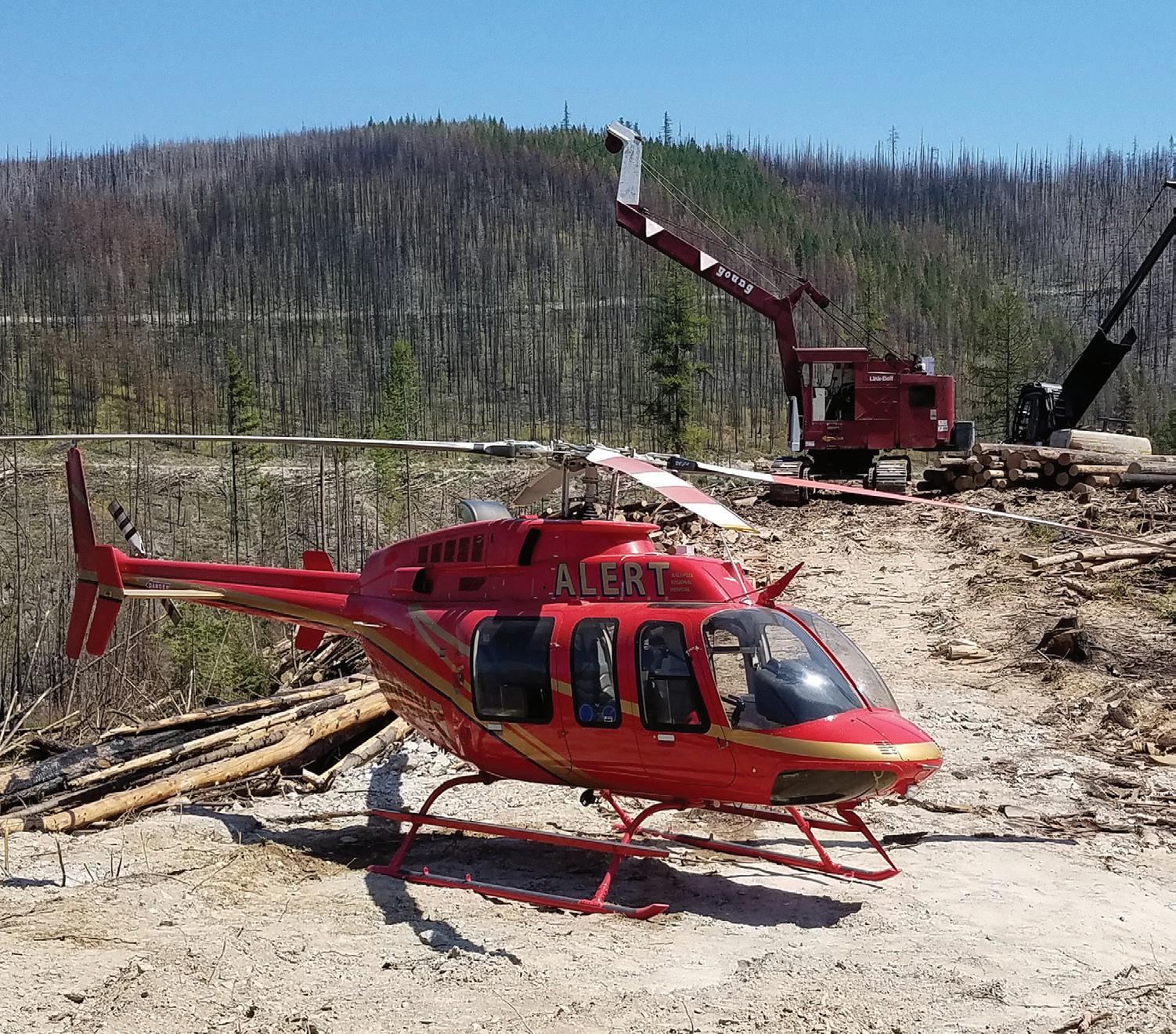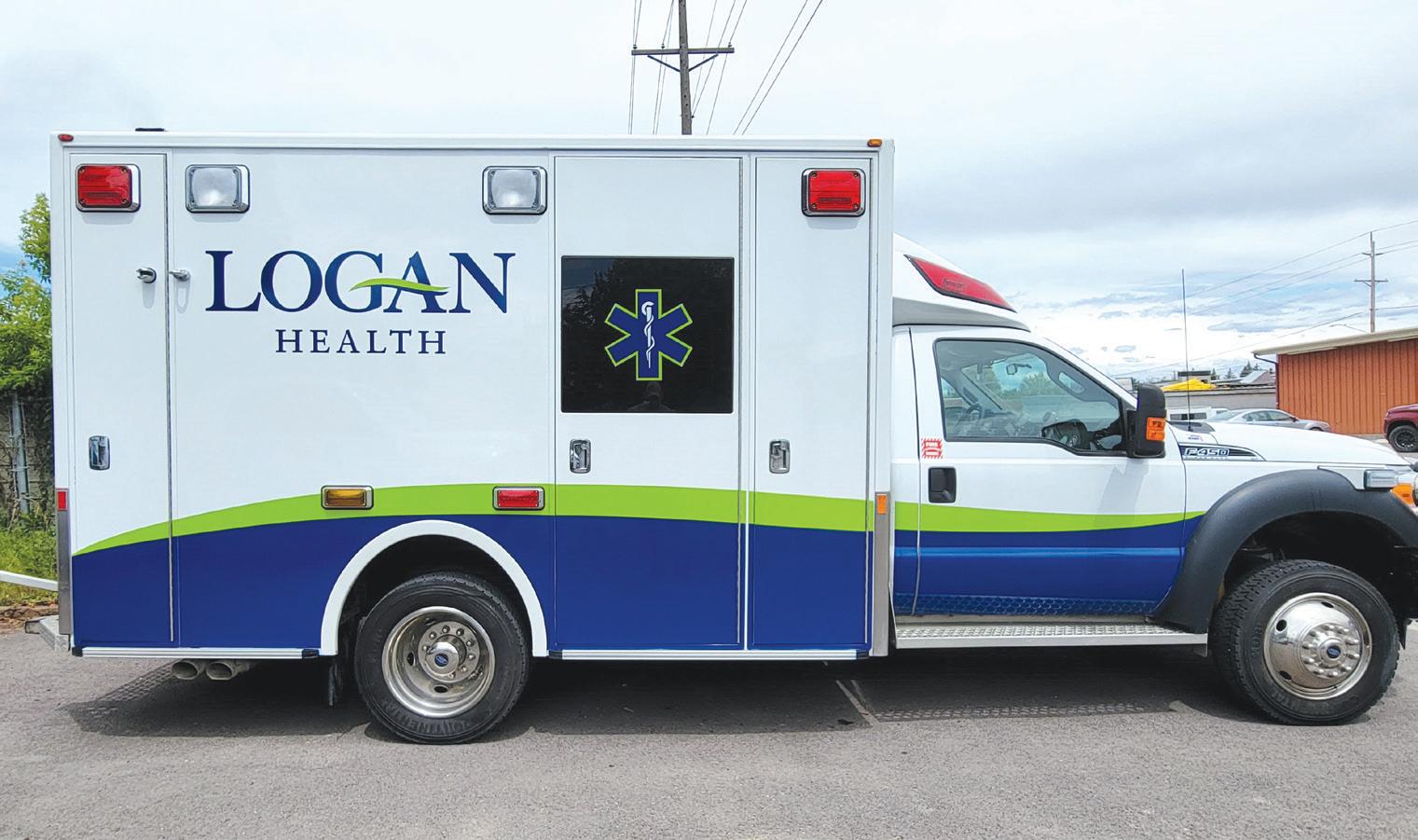
3 minute read
EMERGENCY TRANSPORT: REGIONAL EMS
According to a 2021 assessment by the Montana Department of Health and Human Services, Montana’s rural Emergency Medical Services (EMS) system — like many others across the country — is in crisis: “Without action, it will continue to deteriorate, and calls for help will not be answered.”
Key challenges, according to the report, are staff shortages, declining revenue, and a lack of coordination and trained direction. Ryan Pitts, then Logan Health’s Chief Nursing Officer, and Craig Lambrecht, MD, President and CEO, started discussing these issues several years ago and saw a potential solution for Montana: creating an organized, centralized regional EMS system.
Advertisement
There were pieces of the puzzle already in place. The A.L.E.R.T program has had a transport helicopter since the 1970s, the first rural health hospitalbased air ambulance in the nation. As the hospital began growing in the early 2000s, they contracted out for a fixed-wing aircraft to do additional medical transports, and then in 2011 brought that in-house, with their own plane, pilots, and FAA certificates. But, Ryan said, that wasn’t enough: “We had aircraft here, ambulances in Conrad and Cut Bank … we had satellites, but no hub. We needed to step up – whether it’s by a helicopter, a fixedwing plane, or ground ambulance, from the very basic types of care up through advanced levels of critical care. How are we going to build this system, put it all together, provide the resources and stabilize the area, and provide training and education?”
Ryan was appointed as Emergency Medical Services Executive Director, and started digging in. “My job,” said Ryan, “is to centralize and figure out where it makes sense to put resources, how to hire, how to interact with local communities and volunteers. We are leveraging crews and all the different equipment, aircraft to ground ambulances to dispatchers to EMS, to nurses, paramedics, and critical care paramedics, to ensure patients are taken as quickly as possible to where they need to be. It used to be that every time a complication happened, there could be hours of delay with patients waiting. Now we can redirect a crew here, provide transport there — we can even predict some of the complications and avoid them. That efficiency, sending the right team to the right place, even lowers cost for everyone and reduces risk.”
The system also helps Logan Health see where gaps are and fill those needs. One of the gaps was for a skilled team that could handle the delicate transport of newborns and children. In 2019, Logan Health introduced a specialized OB/NICU transport team made up of four highly skilled nurses equipped with specialized isolettes to transport sick or injured newborns and children from outlying facilities to wherever needed. Just one phone call activates the team, which transports patients by helicopter, airplane or ambulance any time, day or night. This is the only team like it in Montana. According to Kenny Lard, Clinical Nurse Director, the team has handled 153 neonatal and pediatric critical care transports in the last year. When not handling transports, the team also works inside the hospitals, delivering babies and caring for newborns and children. “Having this team available,” Kenny said, “and being able to rely on the EMS system to organize everything, makes access to care so much better for Montanans.”
Ryan and his team are also looking to improve rural EMS care with training, and recruitment. “We’re there in the communities to help train, educate and provide support to local volunteers and paid responders. For example, there’s a small EMS agency in Chester, Montana. They’re trying to provide transports, do their own training, trying to take care of their community. We come in and offer to do some of their training, to handle long-distance transfers for their patients who were waiting for hours. Just call us, and we’ll send out a crew to help. Their relief is palpable, everywhere we go. We also give emergency medical responder classes in high schools. We show students there’s a career path towards EMS, towards being on a critical-care flight crew. We need them, and we’ll help them get there.”
Sometimes people question why Logan Health transport teams respond even for non-Logan patients. Ryan has an easy answer for this. “We’re going to treat you as a community and a family. And if you have a need, we’re going to come out. We believe that health care is a community asset, and Logan Health is willing to put in the necessary resources for this EMS system.”











